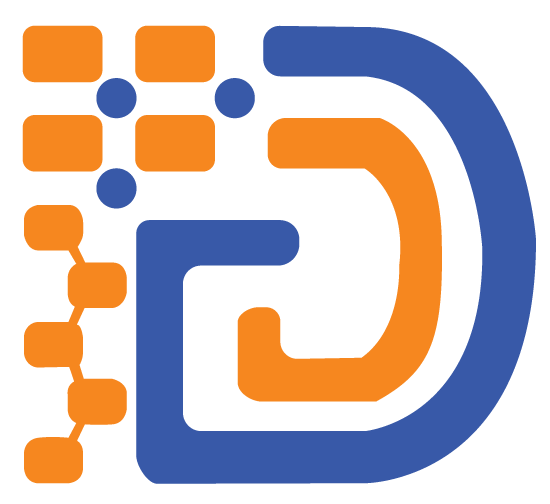Everything You Need to Know About Cloud Computing! When it comes to managing IT infrastructure, it can be difficult to keep up with all the latest changes and developments. Cloud computing, also called cloud services or software as a service (SaaS), is one such change that’s rapidly gaining in popularity, largely because of its potential to save companies money and its flexibility in terms of deployment and implementation. But what exactly is cloud computing? And how does it work? Find out in this guide to everything you need to know about cloud computing.
The History of Clouds
Many people incorrectly think that the idea of a cloud is relatively new. But even before NASA, corporations and governments have been storing data offsite on distant servers for security reasons. In the early 1950s, engineers at MIT created an imaginary computing architecture called ‘The Compatible Time-Sharing System’. It was built on the concept of a cybernetic information system with vast computer memories held in one place and shared by many people over a network, rather than being stored on individual devices. This architecture went live in 1962 under its more well-known name: The Dartmouth Time Sharing System (DTSS). Later, when personal computers became popular in the 1980s, companies like DEC and IBM developed their own private networks or Local Area Networks (LAN) so they could share resources such as printers and modems. Nowadays there are many different types of clouds including public clouds, private clouds and hybrid clouds. Public Clouds are made available to anyone with internet access while Private Clouds are usually accessible only by one company or organization.
Benefits of Using Cloud Solutions
- Ability to access your files and data remotely, regardless of where you are.
- No long-term contract or high monthly fees.
- Lowers expenses by only paying for what you need, when you need it.
- Centralized security. Data is typically stored in a secured cloud location, so even if an employee’s laptop is stolen or the company office is broken into, the company will not be at risk for hackers accessing confidential information such as customer names and addresses. Businesses can also benefit from centralizing their security which could save them time and money because they don’t have to worry about maintaining a system on their own. And depending on the service provider, there might be storage solutions that come with virus protection already built in which would also save money and time over updating software every month.
How to Build a Private Cloud
Build a private cloud by setting up servers in your own data center, installing virtualization software on the server, and then creating virtual machines to run on the hardware. Create custom applications and then save the application program files locally. Create images for each operating system that you need, upload them to Amazon S3, and then associate the image with a network interface card on your virtual machine. Lastly, use ACLs to set permissions for who can log in.
6 Steps to Take Before Switching to the Cloud
The cost-saving benefits of moving your business’s server and software over to the cloud are often too appealing to resist. But before you commit, there are a few questions you should answer. How much space do I need? Is my data public or private? What kind of encryption and backup will I have access to? Your answers can help determine which services from providers like Dropbox, Google, Salesforce, and more will be best for your business.
The following is an info graphic that visually explains what you need to know about Cloud Computing in six steps
- Find out if it’s secure: Before signing up with any service provider, make sure their security measures meet all of your company’s needs. Remember to ask about service levels such as how they handle backups and restore services when a breach occurs, so you can confidently decide on a plan that makes sense for your organization. You may also want to find out if they encrypt all customer data at rest – this is typically where unencrypted data lives while waiting to be accessed by authorized users – and while it’s being transmitted. Some businesses also want their clients’ sensitive information encrypted even after transmission. While some providers offer built-in encryption, others require third party applications to provide protection. These apps can work well in tandem with existing network policies but they’re not necessarily cheap and some come at the expense of other desirable features. Another thing to consider is whether or not you’ll have access to your original files after switching companies; some providers charge per gigabyte stored whereas others offer unlimited storage plans. Finally, take into account whether or not there are costs associated with back ups; some providers charge a fee for restoring previous versions of files and other data lost due to accidents like fire or theft (or malicious attack). It’s worth noting that these costs might be included with higher tier plans or enterprise packages.
- Data Loss Prevention: Will your chosen provider be able to protect your confidential data against hackers? Ask them what type of DLP policy they employ, who has access to the system, and if DLP is enforced by default. Different policies range from low-level content filtering for certain file types such as documents and emails, to high level policy enforcement across every file type in the system.
- Storage: If you have a lot of video footage or audio recordings from recent events, you might want to consider paying extra for higher capacity storage options so that anything uploaded doesn’t eat up too much room. Also, think about your archiving strategy and how long you want to keep the data. The most common time periods range from weeks to years. After a year, most providers will stop charging for archived data.
- Data Sovereignty: Will your provider allow you to control where your data is located? For example, if the US government demands to inspect your records, does the company comply or does it store data outside of US borders? A smaller number of providers store data exclusively outside of US borders for this reason.
- Performance Management: In addition to the size and location of your files, think about whether or not you care how quickly they load when opened. This is especially important for people working in the creative industry or gaming. Some providers will charge you based on the performance of your connection, so it’s important to know what you want from your provider.
- Choose the Right Package: When looking for a service provider, don’t just go with the cheapest option. Many providers offer different tiers of service and as your business grows, you may want to upgrade to one that offers more bandwidth or better hardware. This way, there are no surprises down the line and it will be easier to transition between providers without disruption in services.
Comparing Traditional IT Vs. The Cloud
When businesses first start up, they typically invest in as much physical hardware and software as possible, due to the fact that IT is a relatively new field. However, this has changed with cloud computing now becoming a more popular option for many small businesses. Now there are plenty of advantages when it comes to the cloud vs traditional IT approaches that many companies are taking advantage of. Some of these advantages include lowered costs and increased scalability options, which ultimately lead to big improvements in efficiency. One particular example of an improvement was how data storage became much cheaper on average. The majority of organizations, especially those with larger budgets, used to buy their own servers and data storage units at great expense. But because these items can be purchased from a third party who owns the equipment and can sell off unused space in bulk (e.g., Amazon), organizations can pay for only what they need on a monthly basis instead of large investments upfront.
A lesser-known benefit of cloud computing is that organizations using it tend to save quite a bit on energy consumption thanks to the ability to scale down or increase power usage dynamically without purchasing additional resources upfront – something traditional IT wouldn’t allow you to do without heavy investment up front.
Which Industries Are Best Suited For The Cloud?
Cloud computing can be great for many industries, especially those with limited infrastructure or limitations when it comes to updates and software maintenance. One thing cloud-based systems can offer are automatic backups of your data that run nightly. No matter what happens, you’ll always have a backup plan.
For industries that need the fastest processing time possible, cloud hosting is the best choice. Computer companies such as Google and Apple use this service for their websites, so users get a quick response time without any significant upgrade costs in power or memory space needed onsite at the company’s location. Some experts believe the future of tech companies relies on a move towards greater cloud adoption since computer power becomes exponentially less expensive over time without ever having physical infrastructure costs go down.
PaaS Vs. SaaS (Software as a Service) Vs. IaaS (Infrastructure as a Service)
There are a lot of terms in the field of cloud computing. In order to understand how cloud services differ from one another, it’s important that you have a basic understanding of what each one means. Here’s a primer on three popular forms of cloud computing:
PaaS is an acronym for Platform as a Service, which is best described as managed hosting for software applications. PaaS platforms provide tools and frameworks for developers, as well as databases and storage. The big benefit with PaaS is that you don’t need hardware or software expertise, since the provider takes care of everything from set up and maintenance to upgrades when necessary. Examples of this include Microsoft Azure and Google App Engine.
The SaaS acronym stands for Software as a Service, which can be described as applications delivered over the internet and accessed via web browser. SaaS providers usually charge users per use (such as per month) or offer tiered pricing plans based on usage (such as 1 GB per month). Applications may be specialized business programs like Salesforce, customer relationship management systems like Zoho CRM, project management apps like Basecamp, file-sharing apps like Dropbox – there are many options available! A big advantage with SaaS is that it allows people to work together more easily across different devices without having to share files between them manually.
know about Google maps
Conclusion
It is no surprise that cloud computing has drastically changed the way companies and individuals can store data. It has been a very useful and successful innovation in today’s technological world. Technologies like iCloud and Dropbox have created simple tools for storing documents in the cloud so they are accessible from any device. This is a big deal, because not only does it make your life easier by making sure you never have to be without your important files, but it also has a significant positive impact on the environment. Today, we no longer need gigantic desktop hard drives filled with clutter-cluttering our spaces, which have taken up so much energy just running day in and day out as they store all of our information redundantly on them.




